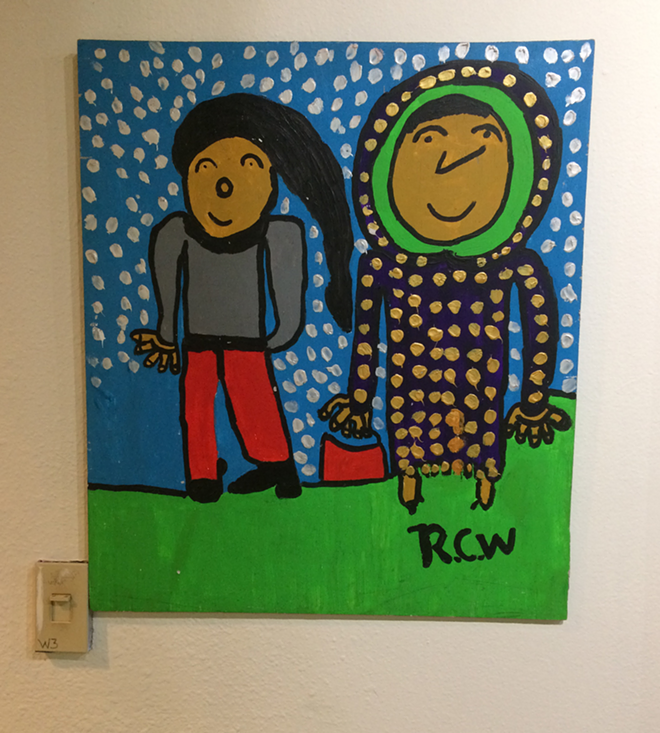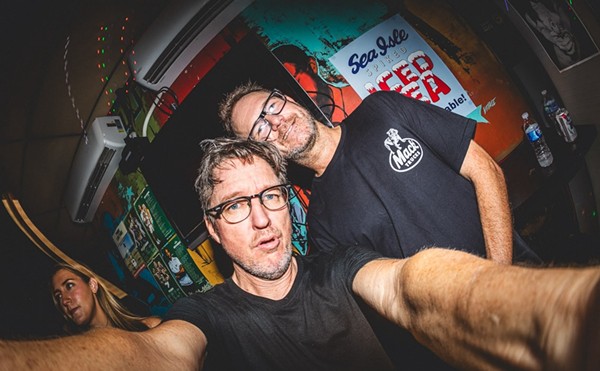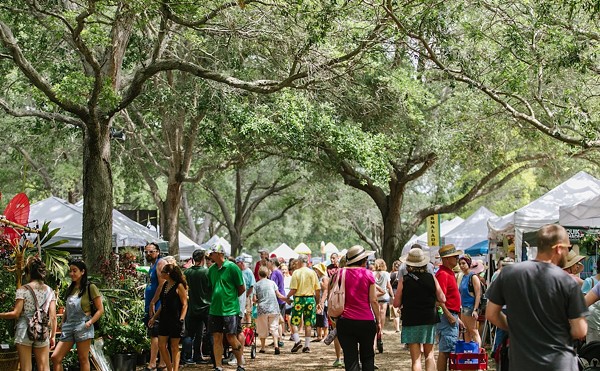Not that the ship has completely sunk, but the traveling exhibition based on the book Just Above the Water: Florida Folk Art by Kristin Congdon and Tina Bucuvalas needs some major repairs. Curated by Bucuvalas, the show culminates their five-year research project full of road trips across Florida, studio visits and interviews with artists and makers to document the diverse folk art scene in our state.
The authors should first be applauded for the incredibly diverse range of artists featured — not only in their materials used, but their cultural upbringing. Each artist gets a wall feature/mini-biography providing background about birthplace and early life, as well as insight into his or her creative process.
Unfortunately, the presentation is not engaging. The show reads like an abbreviated version of the book — perhaps consolidated — printed onto stylish framed poster boards and hung up for easy installation. I think most viewers, smacked in the face with that much wall text, will get overwhelmed and simply walk away
While the show states that black-and-white and color photographs illustrate the artists’ pieces, that’s a severe misrepresentation of this exhibition, unless you consider grainy printed pictures no larger than 6 inches acceptable for a museum. The images, in essence, are supplemental to the text, not — as should be the case — the other way around.
Traditionally, the role of museums is to house a collection of objects of cultural and historical importance for the public to enjoy that they couldn’t otherwise experience. Since folk art is all about the unique materials that make up the essence of the object’s character, I was disappointed to find few actual works to examine up close. In a curatorial overhaul, there could have been a more tactful way to include way more art and less reading material that would leave people excited and eager to read the book.
The few actual works on display lack wall labels. As an example, the two curio tables in the middle of the room feature a smattering of great folk art, where you can examine the lovely craftsmanship of a wooden carved and painted horse and carriage. The sad part is, I have absolutely no clue who made what, as there was no text with the artist name, date created or materials used.
What pains me more than missing information is the distasteful hanging of an artist’s work — in a museum, of all places. Poor Ruby C. Williams’s delightful painting of two figures has to fight for its wall space, as it’s butted up right next to a light switch. I mean, at least give her an inch of breathing room (and some better lighting)! For an exhibition honoring these under-the-radar artists, this is an inappropriate and disrespectful way to display the hard work, heart and soul of these folks.
The one gem of the show is a video interview with Mary Proctor, in which even her sunny, robust personality is able to ignore the blurry, pixilated footage. This interview is a great reminder of how an artist’s character and soul-filled work are intertwined.
Since folk art had huge exhibition coverage in 2016, the St. Pete Museum of History could have taken some cues from the Museum of Fine Art St. Pete (Folk Art on Paper) and the Tampa Museum of Art (Self-Taught Genius). The bottom line? If people are paying admission for what they believe is an exhibition of folk art, they deserve the actual experience of seeing it.
I think the best question that can be asked of the museum or curator is: Who is the show about — the folk artists, or the authors? Perhaps the writers’ pride in their research and the promotion of their book got in the way of allowing the artists’ actual works to speak on their own to museum-goers. That said, the authors’ research should by no means get taken for granted; it is always necessary for people to be recording and documenting our local artists.
Support of folk art comes in many ways, from recorded interviews to photo-documentation, but the highest form of support comes by showing their work not just in small pictures, but in their full, glorious presence. That is why we still have museums, and we should continually ask our cultural institutions to uphold those standards.
Florida Folk Art: Just Above the Water
St. Petersburg Museum of History, 335 Second Ave. N.E., St. Pete.
Through June 10: Mon.-Sat., 10 a.m.-5 p.m.; Sun., 12-5 p.m. $9-$15.
727-894-1052. spmoh.com.















